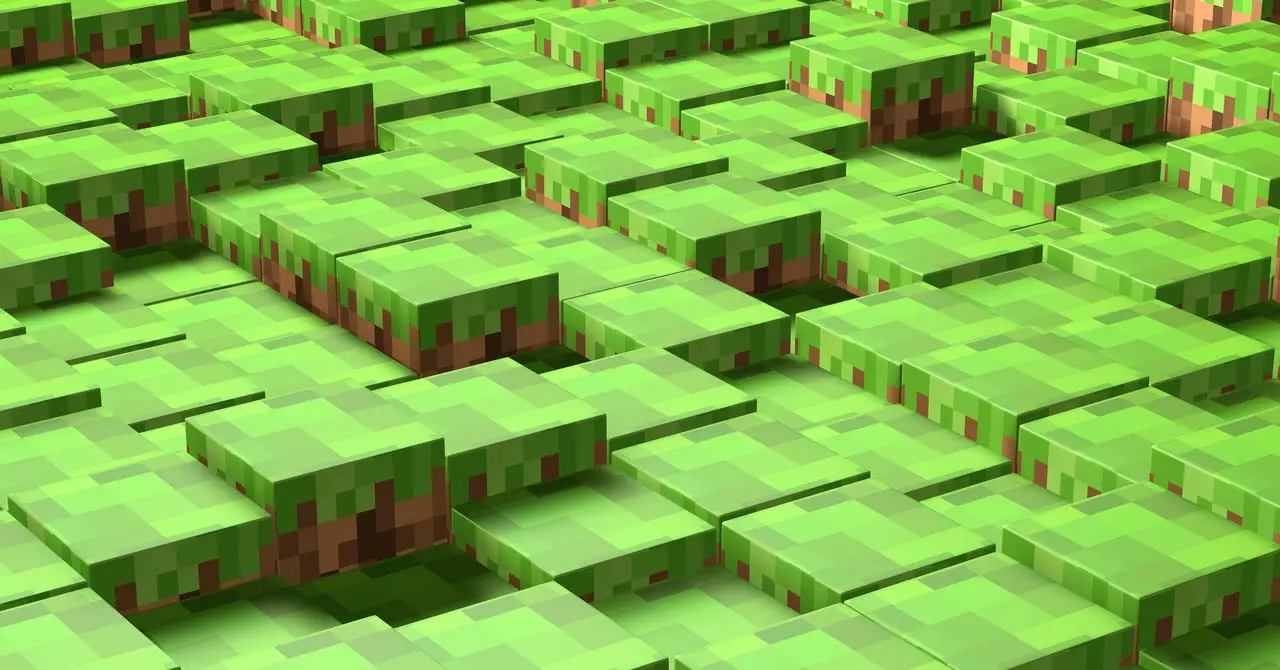The realm of gaming has witnessed a surge of imaginative creations in recent years, yet few have captured the curiosity and intrigue of players as much as Oasis. This new title emerges against the steady backdrop of enduring favorites like Minecraft, a game that continues to thrive a decade after its launch. Oasis operates on a distinct premise, leveraging the capabilities of AI in ways that challenge traditional gameplay norms and expand the boundaries of interactive environments.
A New Era of Game Creation: AI Raw and Unrefined
Developed by the Israeli startup Decart in partnership with Etched, a firm specializing in custom silicon designs, Oasis represents a significant shift in game generation. Unlike conventional video games that utilize specific engines and predefined rules, Oasis demonstrates the potential of generative AI to create a game world that is continuously evolving. This innovative title captivates players with landscapes crafted by an AI model that draws on vast datasets, particularly those containing extensive footage of Minecraft gameplay.
At its core, the game relies on a transformer AI model, which is capable of generating each new frame based on both prior frames and live player interactions. The technology behind Oasis mirrors systems used in language models but is adapted for visual storytelling. The model’s essence lies in how it observes players’ actions—such as mouse clicks or movements—and responds in real-time with an unpredictably original artistic flair, creating a landscape that is often whimsical and surreal.
An Exploration of the Absurd
As players immerse themselves in Oasis, they quickly encounter a world pulsing with eccentricities. “Bizarre artifacts” punctuate the landscape, from oddly shaped animals to perplexing architectural elements that defy logic. This dream-like quality evokes comparisons to well-known cinematic works like “Inception,” where the boundaries of reality blur with imagination. Within this surreal backdrop, the game’s inherent instability also sets it apart. The environment isn’t static; it transforms and adapts with each interaction, often morphing in unpredictable ways. Players might find their meticulously explored surroundings fading into a new iteration of the world before their very eyes, leaving a sense of wonder but also an unsettling feeling of disorientation.
One of the game’s features allows users to upload personal images, initiating a process where the AI translates a photograph into the game’s blocky aesthetic. A player might upload a beloved pet’s picture, as demonstrated with a user’s cat, only to receive an unpredictable result—that cat morphing into an entire landscape rather than a character. This feature underscores the flexibility and unexpected nature of Oasis, reinforcing the idea that players are not mere participants but co-creators within an ever-shifting paradigm.
Oasis has caught onto the viral wave, largely due to players experimenting with its AI to create unexpected environments and scenarios. Exploration often leads to results that surprise even the creators. “People are trying to teleport into different worlds and speed run,” notes Robert Wachen, the COO of Etched. This parlays into a multiplayer aspect of digital play reminiscent of Minecraft, invoking nostalgia while simultaneously engaging modern sensibilities.
However, despite its emergent popularity, criticism surrounds the game’s overall playability. Experts like Julian Togelius from New York University express reservations, pointing to the inconsistency of the AI as a hurdle for typical gaming experiences. While the concept is undoubtedly groundbreaking, with the potential for enriching in-game character interactions, the reality is that the technology remains in a nascent state. It signifies a step towards something revolutionary, yet it lacks the stability players anticipate from traditional gaming formats.
Frank Lantz, another notable figure in the gaming industry, highlights the potential for Oasis to bridge the gap between innovation and enjoyment. He acknowledges the project’s capacity to be “cool and interesting,” hinting that with the right ingenuity, developers might unlock pathways to create enjoyable gameplay that harnesses this generative technology. This perspective affirms that while Oasis may seem more like an abstract experiment at present, it is nevertheless laying the groundwork for future endeavors in the domain of game design.
Oasis stands as a testament to how far artificial intelligence can usher creative development in gaming. Still, as it exists today, it poses a fascinating yet enigmatic experience, characterized by the unpredictable interactions between players and their AI-generated counterparts. Whether Oasis will evolve into a beloved classic or remain a curious novelty is yet to be determined, but it undoubtedly ignites conversations about the future of gaming and the role of generative AI in crafting our digital realities.


Leave a Reply